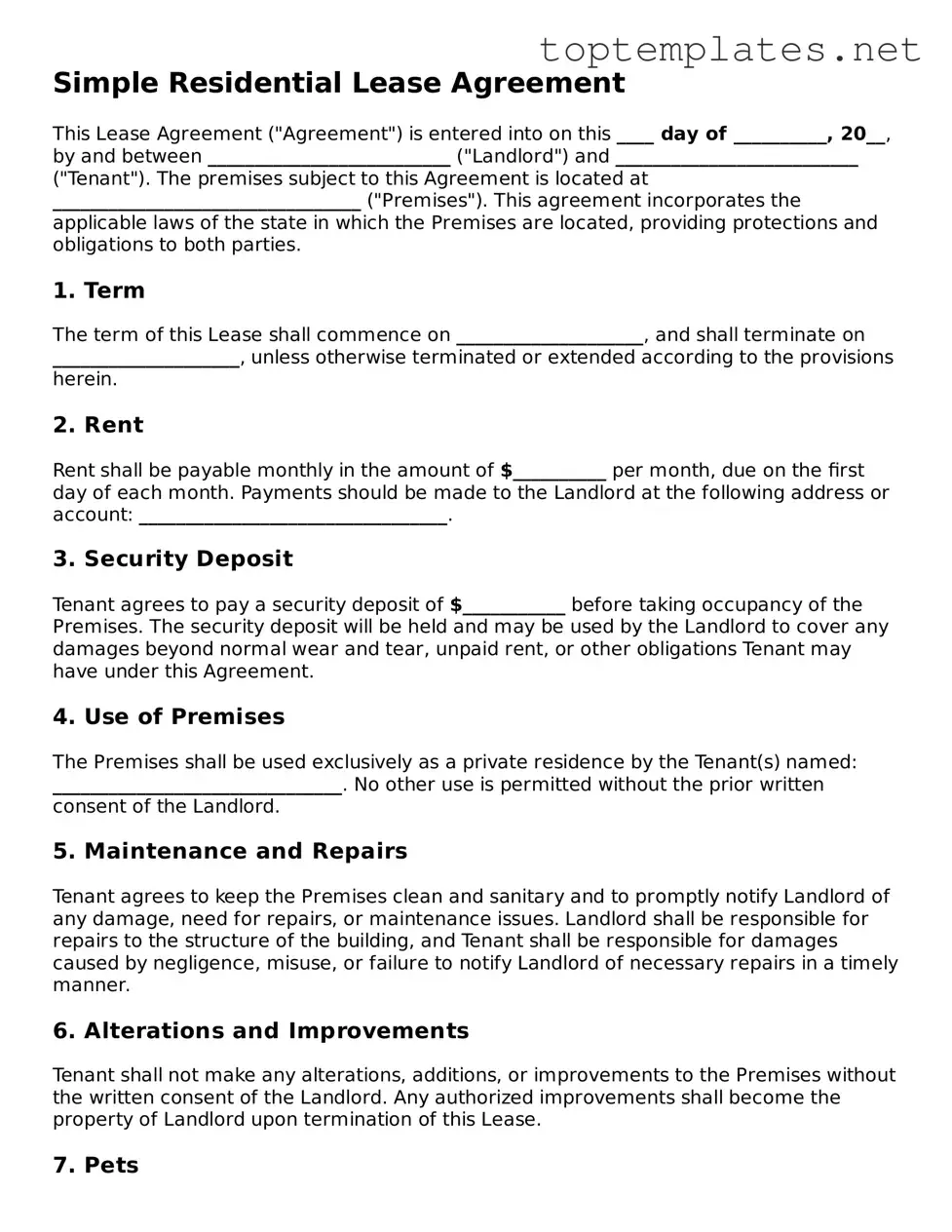Simple Residential Lease Agreement
This Lease Agreement ("Agreement") is entered into on this ____ day of __________, 20__, by and between __________________________ ("Landlord") and __________________________ ("Tenant"). The premises subject to this Agreement is located at _________________________________ ("Premises"). This agreement incorporates the applicable laws of the state in which the Premises are located, providing protections and obligations to both parties.
1. Term
The term of this Lease shall commence on ____________________, and shall terminate on ____________________, unless otherwise terminated or extended according to the provisions herein.
2. Rent
Rent shall be payable monthly in the amount of $__________ per month, due on the first day of each month. Payments should be made to the Landlord at the following address or account: _________________________________.
3. Security Deposit
Tenant agrees to pay a security deposit of $___________ before taking occupancy of the Premises. The security deposit will be held and may be used by the Landlord to cover any damages beyond normal wear and tear, unpaid rent, or other obligations Tenant may have under this Agreement.
4. Use of Premises
The Premises shall be used exclusively as a private residence by the Tenant(s) named: _______________________________. No other use is permitted without the prior written consent of the Landlord.
5. Maintenance and Repairs
Tenant agrees to keep the Premises clean and sanitary and to promptly notify Landlord of any damage, need for repairs, or maintenance issues. Landlord shall be responsible for repairs to the structure of the building, and Tenant shall be responsible for damages caused by negligence, misuse, or failure to notify Landlord of necessary repairs in a timely manner.
6. Alterations and Improvements
Tenant shall not make any alterations, additions, or improvements to the Premises without the written consent of the Landlord. Any authorized improvements shall become the property of Landlord upon termination of this Lease.
7. Pets
Pets are [allowed/not allowed]. If allowed, Tenant agrees to a non-refundable pet deposit of $__________ and to comply with all local pet regulations.
8. Governing Law
This Agreement shall be governed by and construed in accordance with the laws of the State in which the Premises are located, without giving effect to any principles of conflicts of law.
9. Entire Agreement
This Agreement constitutes the entire agreement between the parties and supersedes all prior understandings, agreements, or representations, either oral or written. Any amendments to this Agreement must be in writing and signed by both parties.
Signatures
By signing below, both parties agree to all terms and conditions outlined in this Residential Lease Agreement.
Landlord Signature: __________________________________ Date: _________
Tenant Signature: __________________________________ Date: _________
